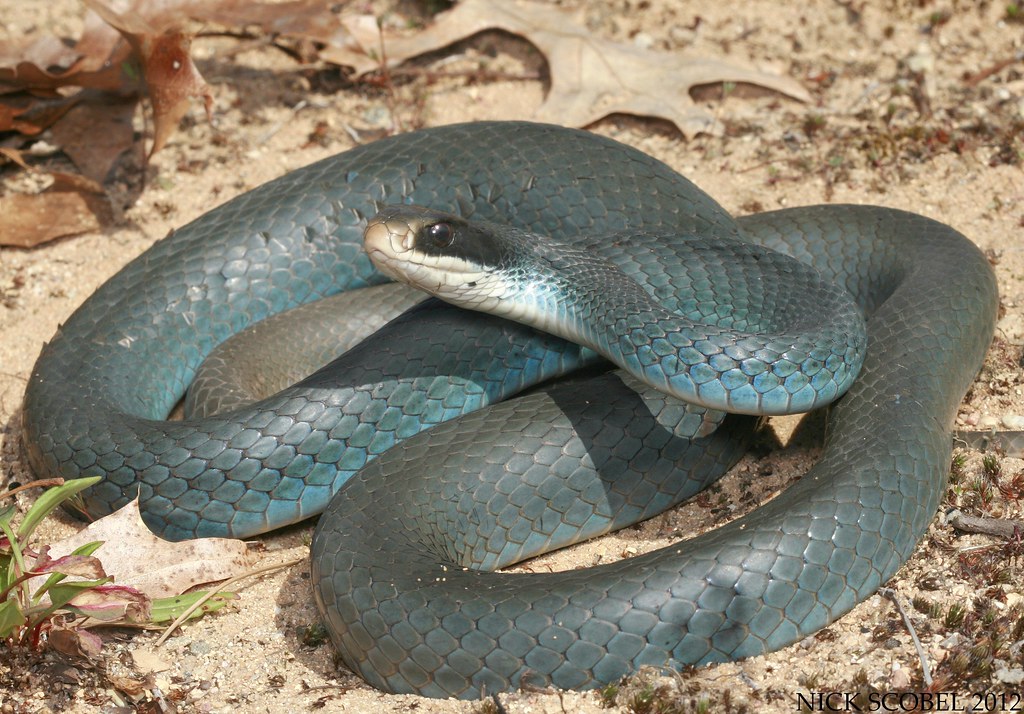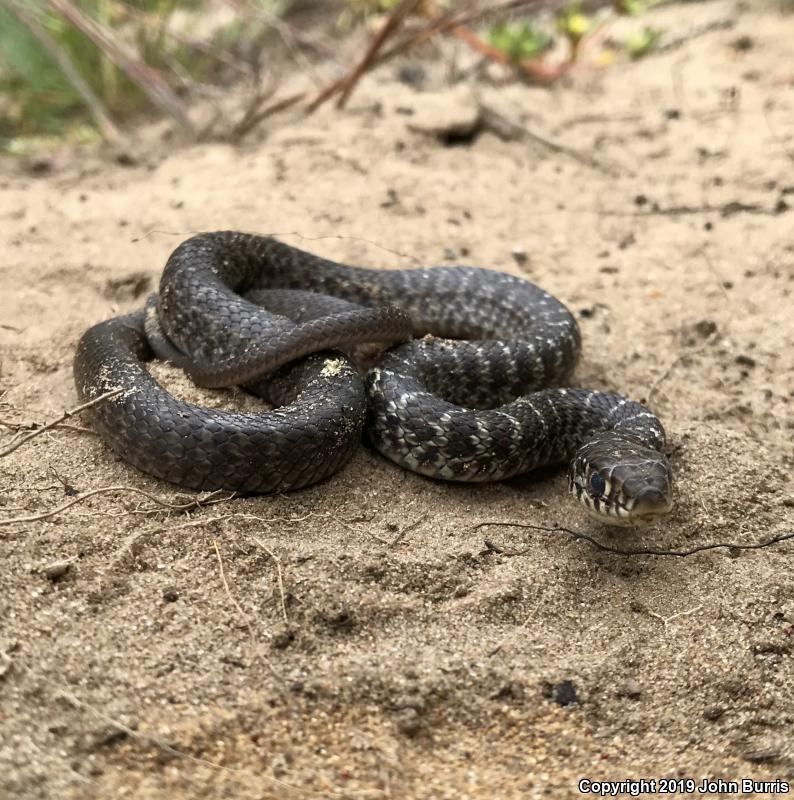
These perching and soaring birds have keen eyesight and drop down to capture black racers and other snakes in a manner that makes the snake's speed and ground awareness ineffectual. Natural enemies include such birds of prey as hawks, including the red-shouldered hawk and broad-winged hawk. Racers are nonvenomous and do not breed with cottonmouths.

The venomous snake has a white lining inside of its mouth. The southern black racer can be mistaken for a cottonmouth – a venomous snake more commonly called a water moccasin. Many are killed on highways and others are intentionally killed out of fear. Humans remain the greatest enemy of black racers. Coluber constrictor foxii, commonly known as the blue racer, is a subspecies of Coluber constrictor, a species of nonvenomous, colubrid snakes. Despite its specific name constrictor (scientific name: Coluber constrictor), the racer is more likely to suffocate or crush its victim into the ground, rather than coiling around it in typical constrictor fashion. The southern black racer is a predator that relies on lizards, insects, moles, birds, eggs, small snakes, rodents, and frogs. The southern black racer has a white chin, whereas an indigo snake normally has a dark to reddish-orange chin. Typical size for this snake is 51–142 cm (20–56 in), and the record is 180 cm (72 in). They are quite fast, giving them the name "racer". The blue racer snake, Coluber constrictor foxii, is one of eleven recognized. Adults of the species are usually thin with a jet black dorsal side with a grey belly and white chin. Members of this species generally do not tolerate handling – even after months in captivity – and typically strike and flail wildly every time they are handled, often defecating a foul-smelling musk, a common defense against predators in snakes. They eat almost any animal they can overpower, including rodents, frogs, toads, and lizards. (Coluber constrictor foxii) Northern ring SNAKES of Michigan - Michelle Caldwell Michigan Snake Identification - Venomous or Not U.S.

These snakes are quite active during the day, which increases the chance of sightings. The subspecific name priapus refers to the proximal spines of the hemipenes being much enlarged into basal hooks, which is characteristic of this subspecies. ISBN 9780842523318.The southern black racer ( Coluber constrictor priapus) is one of the more common subspecies of the nonvenomous Coluber constrictor snake species of the Southeastern United States.

Threatened and Endangered Species and Habitats in British Columbia and the Yukon: Proceedings of the Symposium. ^ Stace-Smith, Richard and Lois Johns (1980).Best Hikes with Dogs: Central California. Order Squamata Family Colubridae Genus Coluber Scientific Name Coluber constrictor foxii Read our Complete Guide to Classification of Animals. Study sites sampled for Blue Racer (Coluber constrictor foxii) during the 2000-2002 population census by Rob Willson (2002). One of the telling characteristics of this subspecies of snake is that they are very active during daytime. Bascanion foxii Baird & Girard, 1853: 96 original combination Coluber constrictor foxi Schmidt. Biology: The Black Racer snake, known as Coluber constrictor priapus, is one of the most common types of nonvenomous snakes in the southern United States. Type locality: Grosse Isle, Wayne County Michigan.

Amphibians and Reptiles of British Columbia. Coluber constrictor foxii (Baird & Girard, 1853) Holotype: USNM 4445, immature, collected by C. Searching for Paradise: Economic Development and Environmental Change in the Mountain West.


 0 kommentar(er)
0 kommentar(er)
